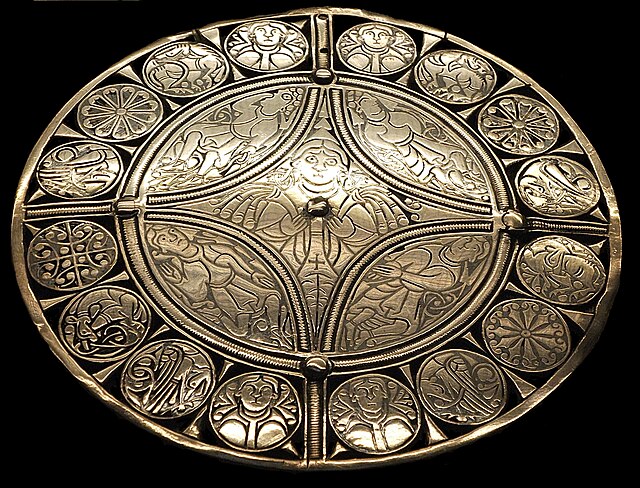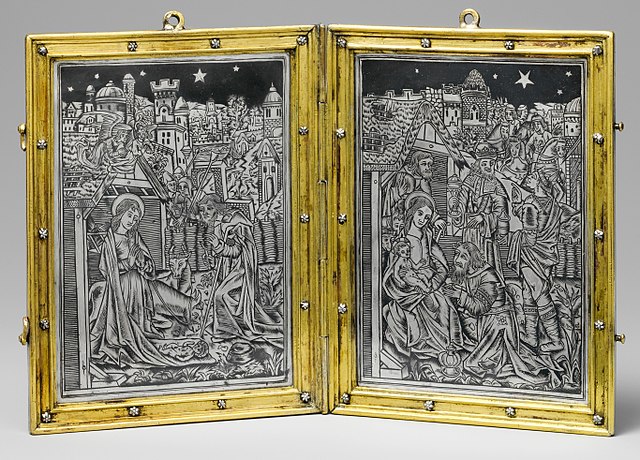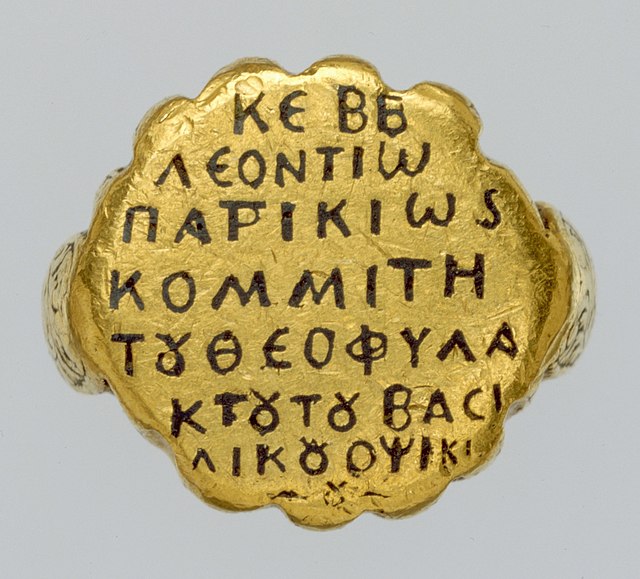The Fuller Brooch is an Anglo-Saxon silver and niello brooch dated to the late 9th century, which is now in the British Museum, where it is normally on display in Room 41. The elegance of the engraved decoration depicting the Five Senses, highlighted by being filled with niello, makes it one of the most highly regarded pieces of Anglo-Saxon art.
Fuller Brooch as displayed in the British Museum
Front view of the brooch
Niello is a black mixture, usually of sulphur, copper, silver, and lead, used as an inlay on engraved or etched metal, especially silver. It is added as a powder or paste, then fired until it melts or at least softens, and flows or is pushed into the engraved lines in the metal. It hardens and blackens when cool, and the niello on the flat surface is polished off to show the filled lines in black, contrasting with the polished metal around it. It may also be used with other metalworking techniques to cover larger areas, as seen in the sky in the diptych illustrated here. The metal where niello is to be placed is often roughened to provide a key. In many cases, especially in objects that have been buried underground, where the niello is now lost, the roughened surface indicates that it was once there.
Diptych with Nativity and Adoration, silver and niello, gilt-bronze frame, Paris, c. 1500, The Cloisters
Byzantine gold ring with niello inscription "Lord help Leontius, Patrician and Count of imperial Obsikion guarded by God", c. 1000 AD
Detail of the bronze "Lion Hunt Dagger" with niello, gold and silver from Grave Circle A, Mycenae, c. 1550 BC.
Detail of a Late Roman silver-gilt buckle from Gaul, c. 400 AD






